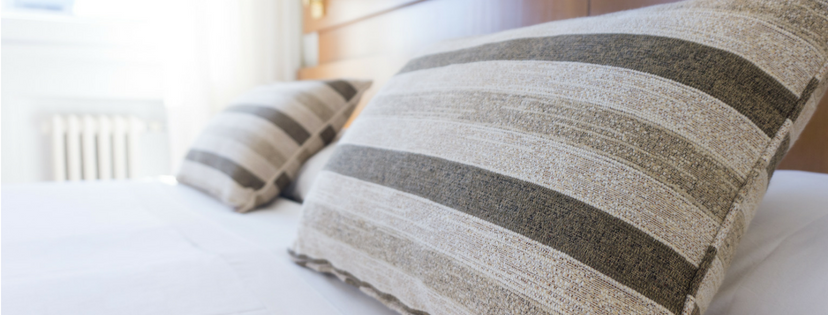
We often get asked, “What’s the best pillow to sleep with?” The answer is there’s no one-size-fits-all best pillow for one person. Instead it’s important to pick the best pillow for your sleeping position and your individual body, posture and any injuries you might have.
The best sleeping position for your spine is laying on your side. You want to try to maintain the most neutral spine possible, which means you shouldn’t be curled in a ball or too straight. Ideally, you’re at a 45-degree angle so your pelvis can sit in a neutral position.
Avoid rolling the top arm and shoulder forward, which can tighten the front of your chest and hurt your rotator cuff too. Instead, keep the arm in a neutral position by resting it on your leg. You can sleep with your bottom arm under your pillow, but you don’t want it to bump your head up.
In this position, what the best pillow for your sleeping position would be is something that will keep your neck in a neutral position, which will minimize any strain. If the pillow is too big, your head will come up and the top side of your neck will be compressed and the bottom side of your neck overextended. If the pillow is too flat, the top side of the neck would be overextended and the bottom side would be compressed.
If you’re a back sleeper, a big pillow it will put you in a forward head position and which will compress and tighten the structure in the front of your neck. This can cause more forward head posture when you’re sitting or standing.
Often you may need NO pillow to keep you in a neutral position. If you do have a curvature – meaning you lay down and your chin is pointing up – you need low a pillow to bring your neck to neutral.
If you’re a stomach sleeper, the best way to sleep is in a neutral position with your head facing straight down. If you go one way or the other – which we tend to do – you’ll put a lot of strain on one side of the neck instead of the other.
People also tend to sleep with one knee up and bent, which can cause a pelvic rotation and cause a lot of different issues with the low back, sacroiliac joint and pelvic area.
I recommend to try not to sleep on your stomach, but if you do, you can put a pillow under your hips and belly to maintain a neutral pelvis and keep your head straight.
Click here to schedule a complimentary phone consultation with one of our physical therapists.
In-Person and Online Consultations


